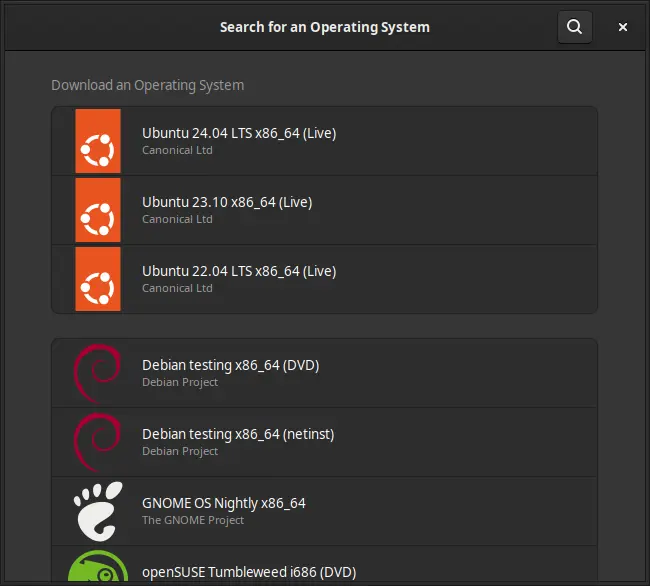GNOME Boxes is a simple and user-friendly virtualization tool that allows you to run multiple operating systems simultaneously on your computer. Whether you want to test another Linux distribution, run a Windows environment, or try out different OS configurations, GNOME Boxes provides an easy and efficient way to do it without the need for complex setup procedures.
In this guide, you’ll learn how to install GNOME Boxes on FunOS, how to launch it, and how to uninstall it completely if you no longer need it.
What is GNOME Boxes?
GNOME Boxes is a desktop virtualization application developed by the GNOME Project. It enables users to create, manage, and run virtual machines (VMs) in a straightforward graphical interface. Unlike more advanced tools like VirtualBox or VMware Workstation, GNOME Boxes focuses on simplicity and integration with the GNOME desktop environment.
With GNOME Boxes, you can:
- Run multiple operating systems at once (Linux, Windows, BSD, etc.)
- Access remote or local virtual machines easily
- Create virtual machines from ISO images with just a few clicks
- Manage storage, memory, and CPU resources through an intuitive interface
Under the hood, GNOME Boxes uses libvirt, QEMU, and KVM to handle virtualization, ensuring excellent performance and reliability on supported hardware.
On FunOS—which is based on Ubuntu—you can install GNOME Boxes directly from the Ubuntu repositories using the Terminal.

How to Install GNOME Boxes on FunOS
Step 1: Open a Terminal
There are three ways to open the Terminal on FunOS:
- Click Menu in the lower-left corner of the screen, then click Terminal
- Click the Terminal icon in the Tray
- Press Ctrl + Alt + T on your keyboard
Step 2: Update the Package List
Before installing new software, it’s a good idea to update the package list to make sure you get the latest version available from the repositories.
sudo apt updateStep 3: Install GNOME Boxes
Once the package list is updated, install GNOME Boxes by running the following command:
sudo apt install gnome-boxesThe system will download and install all required packages, including dependencies such as libvirt, qemu, and virt-manager components. Wait until the installation process is complete.
Step 4: Reload the Menu
After installation, GNOME Boxes may not immediately appear in the application menu. To make it visible:
- Click the Menu button in the lower-left corner.
- Click Reload menu.
This refreshes the application list and adds GNOME Boxes to the menu.
Launching GNOME Boxes
After reloading the menu, you can launch GNOME Boxes easily:
- Click the Menu button in the lower-left corner.
- Look under the Development category, then click GNOME Boxes.
Once launched, you’ll see the main GNOME Boxes window, where you can:
- Create a new virtual machine using an ISO file
- Access existing virtual machines
- Configure hardware resources (CPU, RAM, and disk space)
- Manage snapshots and system states
To create a new VM, simply click + New, select your ISO image, choose installation settings, and follow the on-screen instructions. Within minutes, your new virtual environment will be ready to use.
How to Uninstall GNOME Boxes on FunOS
If you decide that you no longer need GNOME Boxes, you can remove it completely from your system by following these steps.
Step 1: Open a Terminal
Use one of the methods below:
- Click Menu > Terminal
- Click the Terminal icon in the Tray
- Press Ctrl + Alt + T
Step 2: Remove GNOME Boxes
Run the following command to uninstall GNOME Boxes:
sudo apt remove --purge gnome-boxesThis command removes the application and its associated configuration files managed by the package manager.
Step 3: Remove Any Unused Dependencies
Clean up unnecessary packages that were automatically installed with GNOME Boxes and are no longer needed:
sudo apt autoremove --purgeStep 4: Remove User Data (Optional)
If you want to completely delete user data, virtual machine configurations, and cache files, remove the GNOME Boxes directories from your home folder:
rm -rf $HOME/.local/share/gnome-boxes
rm -rf $HOME/.config/gnome-boxes
rm -rf $HOME/.cache/gnome-boxesNote: This step is optional. Make sure you don’t have any important virtual machines stored in these directories before deleting them.
Step 5: Reload the Menu
After uninstalling, refresh the application menu:
- Click the Menu button in the lower-left corner.
- Click Reload menu.
This ensures that GNOME Boxes is completely removed from the menu.
Conclusion
GNOME Boxes offers an elegant and simple way to create and run virtual machines on FunOS. Its seamless integration, lightweight design, and intuitive interface make it an excellent choice for users who want to test other operating systems or run development environments without leaving their main desktop.
By following this guide, you’ve learned how to:
- Install GNOME Boxes on FunOS using the Terminal
- Launch and use GNOME Boxes to create virtual machines
- Uninstall GNOME Boxes and remove leftover files if necessary
With GNOME Boxes installed, you can explore, experiment, and test different systems easily—all within the comfort and security of your FunOS environment.

Leave a Reply